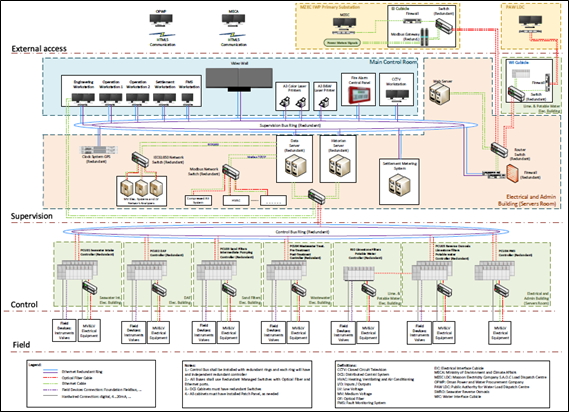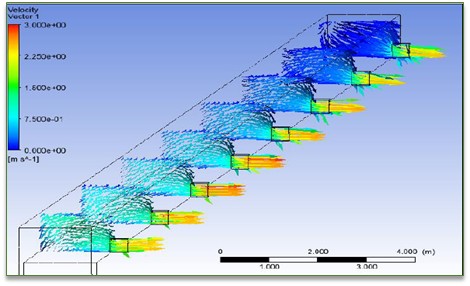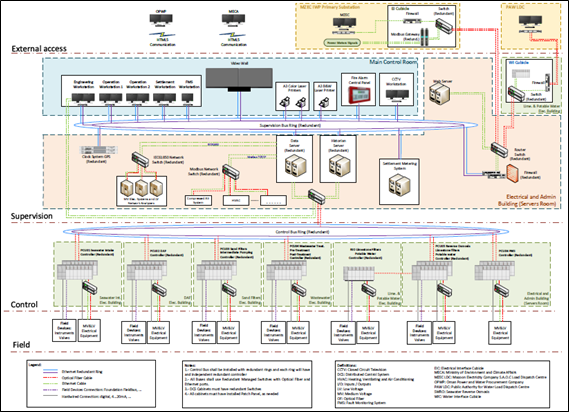- 19 December, 2023
- Francisco Gallego
- Comment: 0
- News

THE FUTURE OF DESALINATION IS NOW
For some years now, a fact has been observed that is causing increasing concern worldwide, sparking debates in recent international governmental meetings: climate change is already a reality. This phenomenon has put one of the primary elements for life’s existence at risk: water. It is anticipated that the risks of drought, along with associated social damages, will increase even more with each degree of global warming.
Therefore, water and climate change share a close connection that is necessary to understand in order to propose solutions that can mitigate the water scarcity problem. In addition to trying to alleviate the growing impact of this environmental issue, it is essential to propose solutions to prevent the decrease in natural water resources from becoming a problem affecting water scarcity.
Consequently, the question is increasingly being asked: Are desalination plants a solution to the water problem?
On Earth, one in four people lives in regions where water is scarce during part of the year, and around 500 million people suffer from water scarcity all year round. Hence, more technological solutions are proposed to address this issue, and one of them is desalination.
Desalination makes seawater potable by removing suspended particles, excess minerals, and salt concentration. This technology has evolved over the years, with physical-chemical methods being the most commonly used today. These methods involve the use of membranes, and their scientific basis includes electrolysis, nano and ultrafiltration, and reverse osmosis.
- Efficiency in salt and mineral removal.
- Low energy consumption.
- Flexibility and scalability.
- Reduced dependence on external water sources.
- Compliance with environmental regulations.
Reverse osmosis desalination involves applying mechanical pressure to counteract natural osmotic pressure and thus filter water through semi-permeable membranes that allow the passage of water molecules but not dissolved salts.
At MEP-Projects, we take pride in being leaders in the development of reverse osmosis desalination plant design. We have been conducting detailed engineering projects for years, specializing in I&C and Electricity disciplines.
Our dedication and experience in this field have allowed us to design innovative and efficient solutions that have met the specific needs of many of our clients.
The trust placed in our team by leading companies in this sector, such as Abengoa S.A (currently CoxAbengoa), GS INIMA, and IWAC, is a testament to our ability to deliver exceptional results and exceed the expectations of the most demanding clients.
At MEP-Projects, we have milestones such as developing detailed engineering in the I&C and Electricity disciplines for one of the largest desalination plants in the world, Taweelah, recognized by the Global Water Awards 2023 as the desalination plant of the year.
This desalination plant is the first to combine drinking water production with clean energy generation in the United Arab Emirates, contributing to reducing Abu Dhabi’s carbon footprint by 2.5 million tons of CO2 per year, marking the beginning of a new era of sustainable desalination.
In addition to Taweelah, we have carried out detailed engineering for about twenty desalination plants, including Djibouti, Shuaibah, Agadir, Salalah, Dubal, Southern, and Barka V.
At MEP-Projects, we generate all kinds of documentation related to detailed engineering, bidding engineering, or administrative-executive projects, not only in the I&C and Electricity discipline, where we specialize but also in disciplines such as Processes, Civil, Piping, or 3D modeling. Some examples of the documentation we typically generate include:
- Lists of instrumentation, electrical, and mechanical equipment.
- Technical specifications and data sheets of equipment and instrumentation.
- Instrumentation layouts and control architectures.
- Signal lists.
- Single-line diagrams.
- Calculation of electrical and I&C trays and cables.
- Electrical calculations: Insulation Coordination, Grounding Calculation, Short Circuit, Load Flow, Harmonics, motor starting calculation, and protection coordination, among others.
- Civil Guide Drawing of the different types of infrastructures that make up a desalination plant.
- Earthmoving.
- Piping routing layout.
- Hydraulic Calculations.

Image 1: Control Architecture in Desalination Process

Image 2: Hydraulic Calculation in Raw Water Filtration Process by Gravity
At MEP-Projects, we always advocate for high-quality engineering, consistently utilizing cutting-edge technology, and keeping in mind our commitment to sustainability. The ability to create a better future depends on what we do in the present moment.
Realizado por Ester Chinchilla (EICA Design & Process Engineer).

